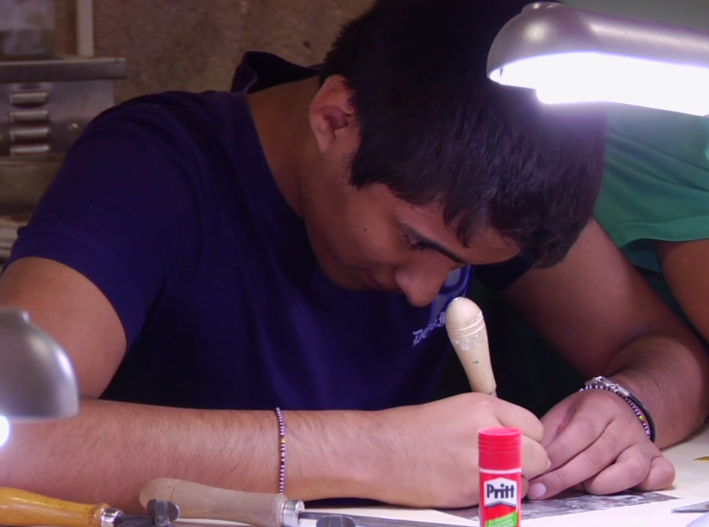* By Vanessa Jaklitsch
The students participating in a pilot project to combat dropout rates are at-risk teenagers between the ages of 14 and 16 with poor grades and attendance records. The schools they attend in Barcelona, Spain have high dropout rates; less than 75% make it to graduation day. Spain has the highest dropout rate in the European Union. According to recent studies, the dropout crisis affects 28.8% of Spain’s youth.
Many of these students struggle to find the motivation to continue studying. Unfortunately, Spanish students’ lack of interest in school is not unique to Spain. Recent studies show that it is one of the main reasons why students in Latin America drop out. The dropout rates in the region leave not room for indifference: one out of two Latin Americans does not finish high school.
To help combat dropout rates the Barcelona Education Consortium introduced the “Curriculum Diversification” program last year. Its mission is clear: improve academic performance, attendance and graduation rates. The program seeks to expose students to different professions to keep them in school. This pilot project gives them the opportunity to gain practical work experience and study core subjects in a more interactive classroom setting. “The idea is that they learn different things, that they learn a different way to earn their high school diplomas, and they continue studying,” said Marc Portal, a pedagogical coordinator for the program.
Film, cooking, sailing, and geography seminars, as well as practicums at health clinics, sports facilities, food banks, libraries, elementary schools, and parks are among the opportunities offered by this pilot program. The results for the 50 student participants are promising. “It’s a great experience to have the opportunity to learn more or less how to make your way in life, to discover what you’d like to do for a living. It motivates you to get your degree and plan for the future,” said one program participant, Mishela Vega. Her classmate Isabel Murcia also imagines a better future thanks to her studies. “I want to care for small children or be an assistant,” she says. Both are in their last year of high school and combine their classes with various training opportunities at local businesses. Now they have a better idea of what they want in the future. They want to keep studying.
Contact with professionals in the working world opens up new horizons for the students. As one of the teachers put it, “I think it helps them a lot to see people around them who have studied and done things with their lives. It helps them to know that not everything is that easy.” The classes are dynamic and practical in which students work in teams. Thanks to support from her teachers, student Miriam Gonzales’ goal is closer than ever before. “In September last year I was thinking about dropping out because I should have already graduated at 16 years old. But my teachers recommended that I participate in this program which is more engaging than the other classes. Now I’m sure that I’ll get my diploma.”
In the Curriculum Diversification model, students take the 30 required credit hours in three 2-hour blocks: internships at local businesses, cross-curricular projects (done in partners), and group activities outside of the program. Internships and projects represent 50% of students’ grades. Activities make up the other 50% of their final grades.
[vsw id=”17435277″ source=”vimeo” width=”425″ height=”344″ autoplay=”no”]
This project was launched last school year in five schools in Barcelona. A committee at each school selects students who can benefit from the program. The main goal is that students understand concepts through a flexible, personalized curriculum designed to motivate them and prevent absences and dropouts.
Early assessments of this innovative program by the Education Consortium and school district are very positive. In just one trimester, the program has improved academic performance and boosted students’ self-esteem; two universal factors in keeping students in school no matter where they’re from.
* Vanessa Jaklitsch is a communications consultant for the Inter-American Development Bank.
Originally published on the Graduate XXI website: http://www.graduatexxi.org/en/menos-teoria-mas-practica/



That is a really good approach to learning as per my perception. I believe that a student can learn better when he/she does the practical implementation of certain things rather than learning the theory. I have been a teacher myself and I found out that students who are allowed to practice what has been taught to them perform better than those who just do the conceptual learning and no practice.